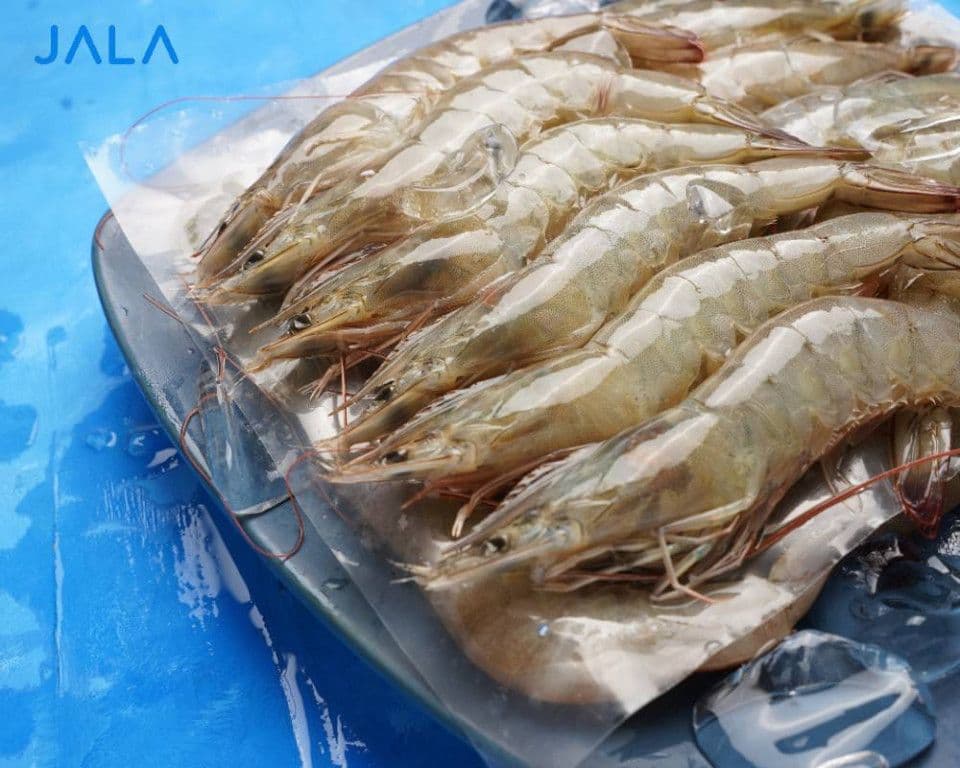
Shrimp is one of Indonesia’s aquaculture commodities with a promising opportunity for development. Indonesia is currently the fourth biggest shrimp exporter in the world after Ecuador, India, and Vietnam. The main species of shrimp cultivated in Indonesia are vannamei shrimp (Litopenaeus vannamei) and tiger shrimp (Penaeus monodon) among others.
Vannamei shrimp (Litopenaeus vannamei) is the top shrimp species in Indonesia’s export market due to its high nutritional value. It can also be cultivated in high density. Based on data from the Ministry of Marine Affairs and Fisheries, shrimp production in 2022 reached 1,099,976 tons, 15% higher from 2021, 953.177 tons. Shrimp production is projected to reach 1.829 million tons in 2023 and a target of 2 million tons in 2024. Several pilot cultivation projects have been initiated to pursue a 250% increase in exports by 2024 (Lukita, 2023).
To reach the set target and secure the trust of export markets, it’s crucial to ensure that the cultivated shrimp are of the best quality. This will increase the demand of destination countries for Indonesian shrimp. The criteria for shrimp to meet the best quality for export are determined to be implemented during the sorting process. Here are some criteria for shrimp that do not pass the processing company sorting because they do not meet export quality standards:
- Black spots
.jpeg)
Shrimp with black spots will be rejected by processing companies as some exporters such as Japan do not tolerate them. The appearance of black spots is usually due to sunlight radiation on the shrimp’s shell during harvest if the farmer fails to store shrimp in ice promptly. Based on research by Dadang (2016), black spots are caused by hormones in the head of the shrimp.
- Moss on shrimp’s body
Shrimp with moss on its body will be rejected by companies as exporters such as the United States and China will not tolerate this. Moss is caused by high water brightness during cultivation which causes sunlight to trigger the growth of moss. This moss can remain on the shrimp’s body upon receival by processing companies due to improper washing after harvest.
- Brown or under-colored shrimp
Some export destinations, especially China, specifically request shrimp of bright white or fresh color. Some processing plants whose export destination is China will reject brown or under-colored shrimp. The brownish color is usually caused by stress on shrimp during harvesting and prolonged post-harvest handling. Meanwhile, under-colored shrimp can be caused by overly long post-harvest processing. Shrimp that die due to technical errors during cultivation can also trigger undercolor during the processing at the factory.
Minimizing shrimp with these three criteria can be anticipated from the cultivation stage in ponds and during post-harvest processes, ensuring that the harvest can be sold at the best price and be accepted in the export market. This does not only ensures productive and sustainable shrimp cultivation but also strengthens Indonesia's reputation as one of the world's top shrimp producers.
If you wish to produce shrimp that fit the export criteria, make sure to run your cultivation appropriately. JALA App is #HeretoHelp you record, monitor, and understand your cultivation conditions conveniently.
Let's start your cultivation journey with JALA! Register at app.jala.tech or download the app at Google Play Store or App Store.

Resources:
Dadang. (2016). Cara Sederhana Menunda Black Spot Pada Udang. Institut Teknologi Sepuluh November Surabaya. ITS Media Center.
Karunia,. (2017). Peluang dan Kendala Ekspor Udang Indonesia Ke Pasar Jepang. eJournal Ilmu Hubungan Internasional.
Produksi Perikanan. Statistik KKP
Lukita G. (2023). Menakar Capaian Produksi Udang.
About the Author:
The author is an alumnus of the aquaculture study program of Airlangga University who is now an employee at JALA.

.jpeg)





